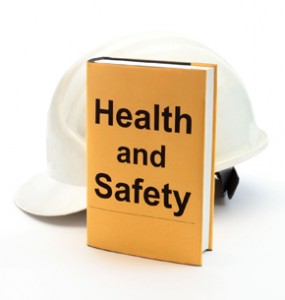 Today, emerging evidence recognizes that both work-related factors and health factors beyond the workplace jointly contribute to many safety and health problems that confront today’s workers and their families. Traditionally, workplace safety and health programs have been compartmentalized. Health protection programs have focused squarely on safety, reducing worker exposures to risk factors arising in the work environment itself. And most workplace health promotion programs have focused exclusively on lifestyle factors off-the-job that place workers at risk. A growing body of science supports the effectiveness of combining these efforts through workplace interventions that integrate health protection and health promotion programs.
Today, emerging evidence recognizes that both work-related factors and health factors beyond the workplace jointly contribute to many safety and health problems that confront today’s workers and their families. Traditionally, workplace safety and health programs have been compartmentalized. Health protection programs have focused squarely on safety, reducing worker exposures to risk factors arising in the work environment itself. And most workplace health promotion programs have focused exclusively on lifestyle factors off-the-job that place workers at risk. A growing body of science supports the effectiveness of combining these efforts through workplace interventions that integrate health protection and health promotion programs.
Health Effects of Chronic Sleep Deprivation
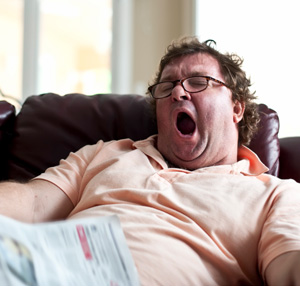 The consequences of sleep deprivation.
The consequences of sleep deprivation.
In the short term:
- Decreased Performance and Alertness: Sleep deprivation induces significant reductions in performance and alertness. Reducing your nighttime sleep by as little as one and a half hours for just one night could result in a reduction of daytime alertness by as much as 32%.
- Memory and Cognitive Impairment: Decreased alertness and excessive daytime sleepiness impair your memory and your cognitive ability — your ability to think and process information.
- Stress Relationships: Disruption of a bed partner’s sleep due to a sleep disorder may cause significant problems for the relationship (for example, separate bedrooms, conflicts, moodiness, etc.).
- Poor Quality of Life: You might, for example, be unable to participate in certain activities that require sustained attention, like going to the movies, seeing your child in a school play, or watching a favorite TV show.
- Occupational Injury: Excessive sleepiness also contributes to a greater than twofold higher risk of sustaining an occupational injury.
- Automobile Injury: The National Highway Traffic Safety Administration (NHTSA) estimates conservatively that each year drowsy driving is responsible for at least 100,000 automobile crashes, 71,000 injuries, and 1,550 fatalities.
The good news for many of the disorders that cause sleep deprivation is that after risk assessment, education, and treatment, memory and cognitive deficits improve and the number of injuries decreases.
In the long term, the clinical consequences of untreated sleep disorders are large indeed. They are associated with numerous, serious medical illnesses, including:
- High blood pressure
- Heart attack
- Heart failure
- Stroke
- Obesity
- Psychiatric problems, including depression and other mood disorders
- Attention Deficit Disorder (ADD)
- Mental impairment
- Fetal and childhood growth retardation
- Injury from accidents
- Disruption of bed partner’s sleep quality
- Poor quality of life
Injury & Illness Investigation
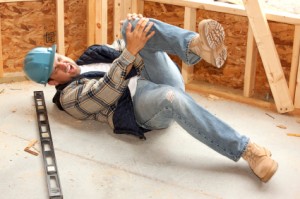 When a work-related injury or illness occurs it is important to investigate the reasons why it happened so we can suggest changes to prevent a similar incident from happening again. Most injuries and illnesses are preventable. The purpose of an investigation is not to assign blame, but to identify contributing factors which can then be controlled. By identifying the factors that led to the incident and then changing the conditions or actions, similar incidents can be avoided in the future.
When a work-related injury or illness occurs it is important to investigate the reasons why it happened so we can suggest changes to prevent a similar incident from happening again. Most injuries and illnesses are preventable. The purpose of an investigation is not to assign blame, but to identify contributing factors which can then be controlled. By identifying the factors that led to the incident and then changing the conditions or actions, similar incidents can be avoided in the future.
Antibiotic Resistance Can Be Deadly
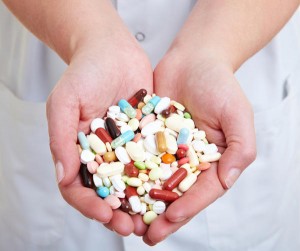 Antibiotics and similar drugs, together called antimicrobial agents, have been used for the last 70 years to treat patients who have infectious diseases. Since the 1940s, these drugs have greatly reduced illness and death from infectious diseases. However, these drugs have been used so widely and for so long that the infectious organisms the antibiotics are designed to kill have adapted to them, making the drugs less effective.
Antibiotics and similar drugs, together called antimicrobial agents, have been used for the last 70 years to treat patients who have infectious diseases. Since the 1940s, these drugs have greatly reduced illness and death from infectious diseases. However, these drugs have been used so widely and for so long that the infectious organisms the antibiotics are designed to kill have adapted to them, making the drugs less effective.
Each year in the United States, at least 2 million people become infected with bacteria that are resistant to antibiotics and at least 23,000 people die each year as a direct result of these infections.
Prevent Slips, Trips and Falls at Work
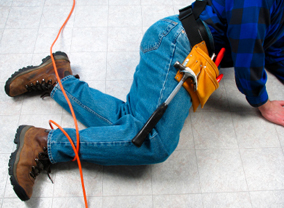 Here are six guidelines to help you create a safer working environment for you and your employees.
Here are six guidelines to help you create a safer working environment for you and your employees.
1) Create Good Housekeeping Practices
Good housekeeping is critical. Safety and housekeeping go hand-in-hand. If your facility’s housekeeping habits are poor, the result may be a higher incidence of employee injuries, ever-increasing insurance costs and regulatory citations. If an organization’s facilities are noticeably clean and well organized, it is a good indication that its overall safety program is effective as well.
Proper housekeeping is a routine. It is an ongoing procedure that is simply done as a part of each worker’s daily performance. To create an effective housekeeping program, there are three simple steps to get you started
- Plan ahead– Know what needs to be done, who’s going to do it and what the particular work area should look like when you are done.
- Assign responsibilities– It may be necessary to assign a specific person or group of workers to clean up, although personal responsibility for cleaning up after himself/herself is preferred.
- Implement a program– Establish housekeeping procedures as a part of the daily routine.
2) Reduce Wet or Slippery Surfaces
Walking surfaces account for a significant portion of injuries reported by state agencies. The most frequently reported types of surfaces where these injuries occur include
- Parking lots
- Sidewalks (or lack of)
- Food preparation areas
- Shower stalls in residential dorms
- Floors in general
Traction on outdoor surfaces can change considerably when weather conditions change. Those conditions can then affect indoor surfaces as moisture is tracked in by pedestrian traffic. Traction control procedures should be constantly monitored for their effectiveness.
- Keep parking lots and sidewalks clean and in good repair condition.
- When snow and ice are present, remove or treat these elements. In some extreme cases, it may be necessary to suspend use of the area.
- Use adhesive striping material or anti-skid paint whenever possible.
Indoor control measures can help reduce the incidence of slips and falls.
- Use moisture-absorbent mats with beveled edges in entrance areas. Make sure they have backing material that will not slide on the floor.
- Display “Wet Floor” signs as needed.
- Use anti-skid adhesive tape in troublesome areas.
- Clean up spills immediately. Create a procedure for taking the appropriate action when someone causes or comes across a food or drink spill.
- Use proper area rugs or mats for food preparation areas.
3) Avoid Creating Obstacles in Aisles and Walkways
Injuries can also result in from trips caused by obstacles, clutter, materials and equipment in aisles, corridors, entranceways and stairwells. Proper housekeeping in work and traffic areas is still the most effective control measure in avoiding the proliferation of these types of hazards. This means having policies or procedures in place and allowing time for cleaning the area, especially where scrap material or waste is a by-product of the work operation.
- Keep all work areas, passageways, storerooms and service areas clean and orderly.
- Avoid stringing cords, cables or air hoses across hallways or in any designated aisle.
- In office areas, avoid leaving boxes, files or briefcases in the aisles.
- Encourage safe work practices such as closing file cabinet drawers after use and picking up loose items from the floor.
- Conduct periodic inspections for slip and trip hazards.
4) Create and Maintain Proper Lighting
Poor lighting in the workplace is associated with an increase in accidents.
- Use proper illumination in walkways, staircases, ramps, hallways, basements, construction areas and dock areas.
- Keep work areas well lit and clean.
- Upon entering a darkened room, always turn on the light first.
- Keep poorly lit walkways clear of clutter and obstructions.
- Keep areas around light switches clear and accessible.
- Repair fixtures, switches and cords immediately if they malfunction.
5) Wear Proper Shoes
The shoes we wear can play a big part in preventing falls. The slickness of the soles and the type of heels worn need to be evaluated to avoid slips, trips and falls. Shoelaces need to be tied correctly. Whenever a fall-related injury is investigated, the footwear needs to be evaluated to see if it contributed to the incident. Employees are expected to wear footwear appropriate for the duties of their work task.
6) Control Individual Behavior
This condition is the toughest to control. It is human nature to let our guard down for two seconds and be distracted by random thoughts or doing multiple activities. Being in a hurry will result in walking too fast or running which increases the chances of a slip, trip or fall. Taking shortcuts, not watching where one is going, using a cell phone, carrying materials which obstructs the vision, wearing sunglasses in low-light areas, not using designated walkways and speed are common elements in many on-the-job injuries.
It’s ultimately up to each individual to plan, stay alert and pay attention.
via 6 guidelines to prevent workplace slips, trips and falls.
Halloween Health and Safety Tips
 Fall celebrations like Halloween are fun times for children, who can dress up in costumes, enjoy parties, and eat yummy treats. These celebrations also provide a chance to give out healthy snacks, get physical activity, and focus on safety.
Fall celebrations like Halloween are fun times for children, who can dress up in costumes, enjoy parties, and eat yummy treats. These celebrations also provide a chance to give out healthy snacks, get physical activity, and focus on safety.
Check out these tips to help make the festivities fun and safe for trick-or-treaters and party guests.
- Swords, knives, and other costume accessories should be short, soft, and flexible.
- Avoid trick-or-treating alone. Walk in groups or with a trusted adult.
- Fasten reflective tape to costumes and bags to help drivers see you.
- Examine all treats for choking hazards and tampering before eating them. Limit the amount of treats you eat.
- Hold a flashlight while trick-or-treating to help you see and others see you. Always WALK and don’t run from house to house.
- Always test make-up in a small area first. Remove it before bedtime to prevent possible skin and eye irritation.
- Look both ways before crossing the street. Use established crosswalks wherever possible.
- Lower your risk for serious eye injury by not wearing decorative contact lenses.
- Only walk on sidewalks whenever possible, or on the far edge of the road facing traffic to stay safe.
- Wear well-fitting masks, costumes, and shoes to avoid blocked vision, trips, and falls.
- Eat only factory-wrapped treats. Avoid eating homemade treats made by strangers.
- Enter homes only if you’re with a trusted adult. Only visit well-lit houses. Never accept rides from strangers.
- Never walk near lit candles or luminaries. Be sure to wear flame-resistant costumes.
What Makes a Good Supervisor?
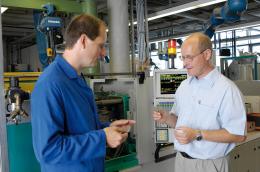 The main qualities required are:
The main qualities required are:
- Great communication skills: As a supervisor one must communicate clearly and correctly to avoid misunderstandings and frustrations. When receiving information from a subordinate, she should be sure to receive it correctly – There is no harm in asking again if necessary.
- Adapt to the changes: World is changing at a fast pace. The efficient supervisors ought to keep up with it. Do not just blindly follow the age old norms and rules. Think out of the box if required. Adjust to the needs of the organization.
- Value the employees: The people are any supervisor’s real asset. They are ones running the business and the work. A good supervisor understands their worth and treats them accordingly.
- A coacher/mentor: Share your experience. A good supervisor shares her wisdom, knowledge and experience with the employees. She helps them perform better. This also strengthens the bond and the trust between them.
- Disciplined: If a supervisor is disciplined then only can she expect the people to be so. The boss is an example – Come on time, meet the time-lines, set a behavioral code if necessary.
- Feedback/incentives: Promotions, feedback, raises and accolades should be showered on the deserving people.
- Be an example: Be hands on – Do not just always delegate. At times the boss should take on projects too. She may try picking up something less attractive or uninteresting and complete it wonderfully. This sets an example to all the team about taking up challenges and about how any work is important.
- Be approachable: The employees should not hesitate in approaching the supervisor with their concerns and problems. An efficient supervisor will make sure that there is enough trust and openness between her and the employees for the latter to come to her with their grievances.
- Be considerate: People are not just employees. They have families, friends and a life beyond work. Unless there is something urgent, do not make them work beyond the usual hours. Let them have their weekends and vacations. Be practical when setting the time-lines. This all will in turn improve the efficiency and the productivity of the employees.
- Positive attitude: Be polite. Wish employees good mornings and be generous in thanking them. Inquire after about their families off and on.
- Criticize constructively: When mistakes happen a good supervisor tries and understands the reasons behind the mishap. She criticizes or assesses the employee in proportion to the mistake. And it is always better to not to scream or scold in front of the others. Give constructive feedback; show them the right way to do things.
A supervisor ought not to take the power for granted and continue working on the qualities required to become a great supervisor.
via What Makes a Good Supervisor? 10 Qualities of a Good Supervisor.
Flu Vaccination & Vaccine Safety
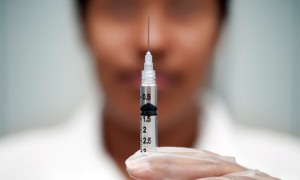 Seasonal flu vaccines have a very good safety track record.
Seasonal flu vaccines have a very good safety track record.
AVAILABILITY
- The flu vaccine is available by shot or nasal spray.
- Get your flu shot or spray as soon as the vaccine is available in your area.
- It is especially important to get the vaccine if you, someone you live with, or someone you care for is at high risk of complications from the flu.
- Mild reactions such as soreness, headaches, and fever are common side effects of the flu vaccine.
- If you experience a severe reaction such as difficulty breathing, hives, or facial swelling, seek medical attention immediately.
Effects of Uncontrolled Stress at Work
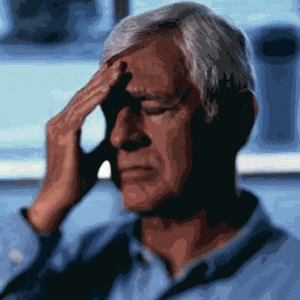 Unfortunately, work-related stress doesn’t just disappear when you head home for the day. When stress persists, it can take a toll on your health and well-being.
Unfortunately, work-related stress doesn’t just disappear when you head home for the day. When stress persists, it can take a toll on your health and well-being.
In the short term, a stressful work environment can contribute to problems such as headache, stomachache, sleep disturbances, short temper and difficulty concentrating. Chronic stress can result in anxiety, insomnia, high blood pressure and a weakened immune system. It can also contribute to health conditions such as depression, obesity and heart disease. Compounding the problem, people who experience excessive stress often deal with it in unhealthy ways such as overeating, eating unhealthy foods, smoking cigarettes or abusing drugs and alcohol.
Myths and Facts About Seat Belts
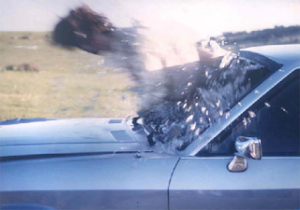 MYTH: I’d rather be thrown clear in a crash.
MYTH: I’d rather be thrown clear in a crash.
FACT: Being thrown safely clear in a crash is almost impossible. When you’re thrown, you may be thrown through the windshield, scraped along the pavement, or even crushed by your own vehicle or another one. The idea of being thrown from a car and gently landing in a grassy area beside the road is pure fantasy. Your best bet in a crash is to stay inside the vehicle, securely held by your seat belt.
